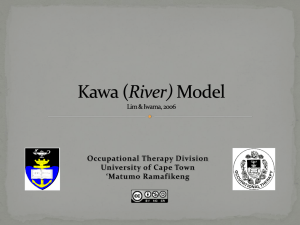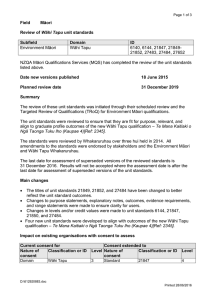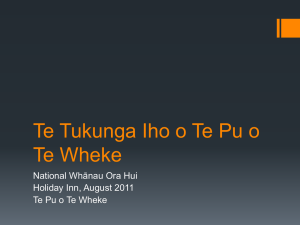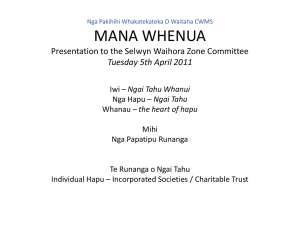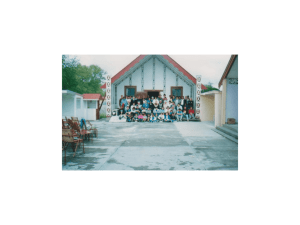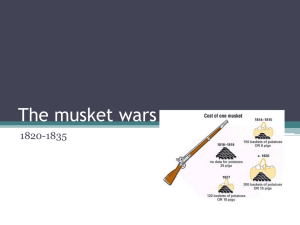Powhiri: Maori Welcoming Ceremony - Purpose & Protocols
advertisement
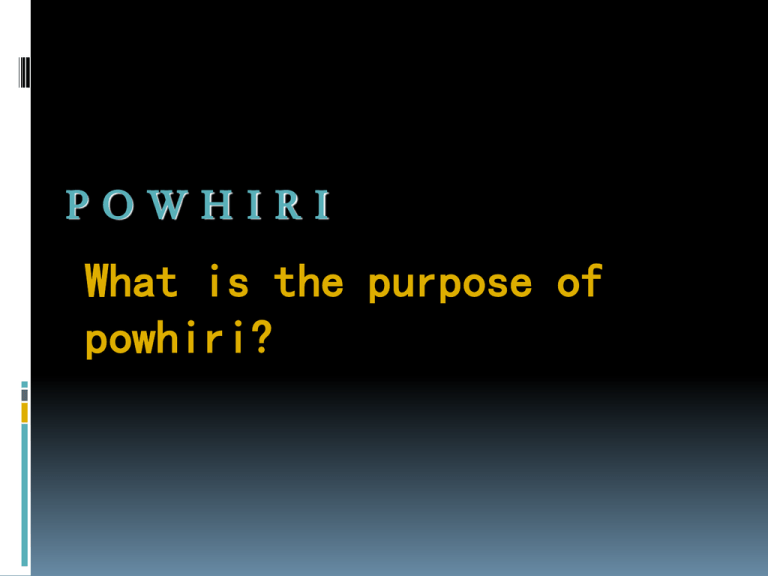
POWHIRI What is the purpose of powhiri? The powhiri is a ritual of encounter between: The host people and the visitors The rituals clears away any tapu barriers All who take part are under the protection of the marae The visitors show respect by giving support (koha) and being careful to keep to the values and practices of the host people Present in Powhiri is Tapu and Noa Acknowledges the sacred/spiritual to land, to people, to atua (god) The protection of and maintenance of boundaries as they apply within the tikanga (protocols) of iwi, hapu and whanau. Including people, places, actions. Acknowledgement of all involved in process, including those who have been involved in the past What is tapu? What is noa? The dual concept of tapu (sacred) and noa (free from tapu) regulated and constricted every facet of Maori life Tapu is a positive force, associated with life, immortality, masculine objects and women of the highest rank. Noa allowed things to become normal Kawa, Tikanga and Powhiri When conducting powhiri it is necessary to consider some comcepts: Kawa (boundaries) Kawa polices a practice. It serves to ensure that the outcome intended is achieved through a minimum standard of practice that aligns itself to the cultures philosophy and view of the world Tikanga (Practices) Tikanga implies that there is a correct way to do things that involves priority based on past observations or whakapapa that helped qualify and quantify the ‘correctness’ of the said practice KA TAE MAI NGA MANUHIRI Ka wero te kaiwero A warrior will come out to assess the intentions of the visitors He will be the ‘best’ warrior He will issue a challenge How the challenge is responded to will indicate the guests intentions Ka whakautu te kaikaranga manuhiri Ka karanga te kaikaranga The women on the tangata whenua (host) side will call to the guests The women on the visitors side will respond to the hosts and the manuhiri start their entrance onto the marae The kaikaranga (caller) is the first speaker. She represents the very best of female speakers where women do not speak on the marae atea. Haka Powhiri Ka korero te kaikorero The men stand and speak this part of the process is about removing tapu and initiating the start of kotahitanga Ka korero te kaikorero After each speaker the rest of the whanau stand and sing a waiata tautoko (supporting song) The Hongi Ka hongi tetahi ki tetahi After the whaikorero and waiata there is an opportunity to lay down your koha (gift) Following this, everyone greets each other. The hongi. Ka kaitahi To completely break the tapu and bring about kotahitanga everyone shares kai (food) together Powhiri and nga atua Maori Tumatauenga governs the kawa of wero Papatuanuku, Hineahuone and Hine titama hold the kawa of the karanga Tane te wananga and Tu te ihiihi influence the kawa of whaikorero Tawhirimatea, tane mahuta and Tumatauenga hold the kawa of the marae atea Rongomatane hold the kawa of the whare tipuna Tahu, Hinenuitepo and Rongomaraeroa govern the kawa of kai hakari Kia Karanga: The caller – call of welcome Whaikorero – The orator speech of welcome Kai Waiata – The singer Complementary chants or songs Tangi – expression of emotion, sorrow, grief, joy Kokiri take – initating projects and action, addressing issues Whakatara – stirring, being accountable and holding people to what they say they will do Karakia – Prayer Mahi kai – The gathering of food Whakapai marae –The tidying of the marae Roles and Roleplayers Tapu and Noa Tapu implies the presence of supernatural power (whether good or evil) and attracts attention and respect, Noa implies the absence of such power and attracts neither attention nor respect. Tapu also stands for danger, restrictions on freedom of action Noa on the other hand, is safety, freedom from restriction, and relaxed, outgoing warmth.

